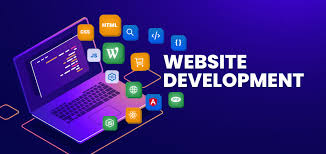Introduction
In the fast-evolving digital landscape, website development is not just about creating an online presence—it’s about crafting an experience that engages, converts, and retains visitors. As we step into 2025, the expectations for website development have never been higher. Users demand speed, personalization, and seamless interactions, while search engines prioritize security, accessibility, and mobile-friendliness.
Whether you’re launching a new site or revamping an existing one, integrating the right features is crucial for success. In this comprehensive guide, we’ll explore the 10 must-have features for website development in 2025, ensuring your site stands out, performs well, and delivers measurable results.
Why Website Development Matters More Than Ever
Before diving into the features, let’s understand why website development is a game-changer in 2025:
- User Experience (UX): A well-developed website keeps visitors engaged and reduces bounce rates.
- Search Engine Optimization (SEO): Modern website development practices directly impact your search rankings.
- Conversion Rates: The right features can turn visitors into customers, subscribers, or leads.
- Brand Credibility: A professional, up-to-date website builds trust and authority.
- Future-Proofing: Staying ahead of trends ensures your site remains relevant and competitive.
With these benefits in mind, let’s explore the 10 must-have features for website development in 2025.
1. Mobile-First Design: The Cornerstone of Modern Website Development
Why It’s Essential
In 2025, mobile devices account for over 60% of global web traffic. Google’s mobile-first indexing means your site’s mobile version is the primary factor in search rankings. If your website development strategy doesn’t prioritize mobile, you’re missing out on traffic, engagement, and conversions.
How to Implement
- Responsive Design: Ensure your site adapts seamlessly to all screen sizes.
- Touch-Friendly Navigation: Buttons and menus should be easy to tap.
- Fast Loading: Optimize images, leverage lazy loading, and minimize redirects.
- AMP (Accelerated Mobile Pages): Use AMP to deliver lightning-fast mobile experiences.
Pro Tip: Test your site’s mobile performance using Google’s Mobile-Friendly Test tool.
2. AI and Machine Learning Integration
Why It’s Essential
Artificial Intelligence (AI) and Machine Learning (ML) are revolutionizing website development by enabling personalization, automation, and predictive analytics. In 2025, AI is no longer a luxury—it’s a necessity for delivering tailored user experiences and streamlining operations.
How to Implement
- Chatbots: Use AI-powered chatbots for 24/7 customer support and lead generation.
- Personalized Content: Leverage ML to recommend products, articles, or services based on user behavior.
- Voice Search Optimization: Optimize for voice queries, as voice search continues to grow.
- Predictive Analytics: Use AI to forecast user needs and optimize conversions.
Example: E-commerce giants like Amazon use AI to personalize product recommendations, increasing sales and customer satisfaction.
3. Core Web Vitals and Page Speed Optimization
Why It’s Essential
Google’s Core Web Vitals are a set of metrics that measure real-world user experience for loading performance, interactivity, and visual stability. In 2025, these metrics are critical for both SEO and user retention.
How to Improve Core Web Vitals
- Largest Contentful Paint (LCP): Optimize server response times, use a CDN, and compress images.
- First Input Delay (FID): Minimize JavaScript execution and use browser caching.
- Cumulative Layout Shift (CLS): Ensure stable layouts by setting size attributes for images and ads.
Tool Recommendation: Use Google PageSpeed Insights to audit and improve your site’s performance.
4. Advanced Security Features
Why It’s Essential
Cyber threats are on the rise, and users are more conscious of online security than ever. A secure website is not only a trust signal but also a ranking factor for search engines.
How to Secure Your Site
- SSL Certificate: Ensure your site uses HTTPS to encrypt data.
- Regular Updates: Keep your CMS, plugins, and themes up to date.
- Two-Factor Authentication (2FA): Add an extra layer of security for admin access.
- DDoS Protection: Use services like Cloudflare to protect against attacks.
Statistic: According to a 2024 report, 85% of users avoid unsecured websites, making security a top priority in website development.
5. Accessibility and Inclusive Design
Why It’s Essential
Web accessibility ensures that people with disabilities can use your site effectively. In 2025, accessibility is not just a legal requirement in many regions—it’s a moral and business imperative.
How to Make Your Site Accessible
- Alt Text for Images: Describe images for screen readers.
- Keyboard Navigation: Ensure all functions are accessible via keyboard.
- Color Contrast: Use high-contrast colors for readability.
- ARIA Labels: Implement Accessible Rich Internet Applications (ARIA) for dynamic content.
Resource: Use the Web Content Accessibility Guidelines (WCAG) as a reference for best practices.
6. Voice Search and Natural Language Processing (NLP)
Why It’s Essential
With the rise of smart speakers and voice assistants, voice search optimization is a must in 2025. Users are increasingly using natural language to find information online.
How to Optimize for Voice Search
- Long-Tail Keywords: Focus on conversational phrases and questions.
- FAQ Pages: Create content that answers common voice search queries.
- Local SEO: Optimize for “near me” searches, as many voice queries are local.
- Schema Markup: Use structured data to help search engines understand your content.
Example: “Best Italian restaurant near me” is a typical voice search query.
7. Interactive and Immersive Elements
Why It’s Essential
Interactive elements like quizzes, polls, 360-degree views, and augmented reality (AR) enhance user engagement and dwell time, which are positive signals for SEO.
How to Add Interactivity
- Quizzes and Surveys: Use tools like Typeform or SurveyMonkey to engage visitors.
- AR/VR Experiences: Showcase products in 3D or AR for e-commerce sites.
- Interactive Infographics: Make data engaging and shareable.
Case Study: IKEA’s AR app allows users to visualize furniture in their homes, increasing conversions and reducing returns.
8. Progressive Web Apps (PWAs)
Why It’s Essential
Progressive Web Apps combine the best of web and mobile apps, offering fast loading, offline functionality, and app-like experiences without the need for downloads.
Benefits of PWAs
- Offline Access: Users can browse even without an internet connection.
- Push Notifications: Re-engage users with timely updates.
- Faster Load Times: PWAs load instantly, reducing bounce rates.
Example: Twitter Lite, a PWA, saw a 65% increase in pages per session and a 75% increase in Tweets.
9. Content Personalization and Dynamic Content
Why It’s Essential
Personalization is key to delivering relevant experiences. In 2025, users expect content tailored to their preferences, location, and behavior.
How to Personalize Content
- User Segmentation: Group users based on demographics, behavior, or past interactions.
- Dynamic Content: Use tools like HubSpot or Optimizely to display personalized content.
- Geolocation: Show location-specific offers or information.
Statistic: 80% of consumers are more likely to purchase from a brand that provides personalized experiences (Epsilon, 2024).
10. Sustainable and Green Web Hosting
Why It’s Essential
Sustainability is a growing concern, and eco-friendly website development is gaining traction. Green hosting reduces your carbon footprint and appeals to environmentally conscious users.
How to Go Green
- Choose Green Hosting: Providers like GreenGeeks or A2 Hosting use renewable energy.
- Optimize Code: Clean, efficient code reduces server load and energy consumption.
- Lazy Loading: Load only what’s needed, reducing data transfer.
Impact: A sustainable website can reduce CO2 emissions by up to 80% compared to traditional hosting.
Conclusion: Future-Proof Your Website Development in 2025
In 2025, website development is about more than just aesthetics—it’s about creating fast, secure, accessible, and engaging digital experiences. By integrating these 10 must-have features, you’ll not only meet user expectations but also stay ahead of the competition and future-proof your online presence.
Quick Recap:
- Mobile-First Design
- AI and Machine Learning
- Core Web Vitals and Page Speed
- Advanced Security
- Accessibility and Inclusive Design
- Voice Search and NLP
- Interactive and Immersive Elements
- Progressive Web Apps (PWAs)
- Content Personalization
- Sustainable Web Hosting
Ready to elevate your website? Start by auditing your current site and implementing these features one by one. For personalized advice or website development services, feel free to reach out contact us
What feature are you most excited to implement in your next website project? Share your thoughts in the comments!

